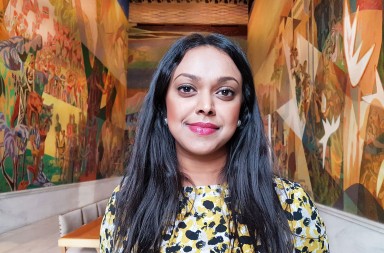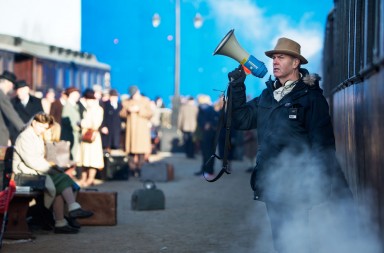Even though the Norwegian monarchy dates back more than a thousand years, modern Norway as an independent nation is relatively young. After having been in a union with its Scandinavian neighbours for more than 500 years, Norway chose their first King from abroad. This means that the Norwegian Royal Family is originally not from Norway, but from Denmark and Great Britain.
What is a Constitutional Monarchy?
A constitutional monarchy means that the King is formally the head of state, but that his duties are mainly representative and ceremonial. The powers vested in the Monarch are significant, but are treated only as reserve powers and as an important security part of the role of the monarchy.
The King’s Role in a Constitutional Monarchy
The King undertakes the formal opening of the Storting (the Norwegian parliament) every autumn. He plays an important role in connection with changes of government and presides over the Council of State at the Royal Palace. The King and Queen make state visits to other countries and are hosts to foreign Heads of State who visit Norway. The King is Commander-in-Chief of the country’s armed forces, and holds the rank of general in the Army and Air Force, and admiral in the Navy. The King is treated by the armed forces as their highest commander, but there is, beyond legal fiction, no doubt that the complete control of the armed forces is actually held by the elected government of the day. The King also served as the formal head of the Church of Norway. The constitutional amendment of 21 May 2012, however, meant that the King is no longer the formal head but is still required to be of the Evangelical Lutheran religion.
Norway Said Yes to Danish Prince Carl in 1905
When Norway gained its independence in 1905, there was a referendum. The people voted for a constitutional monarchy. For a constitutional monarchy, Norway needed a king. Having been in a union with both Denmark and Sweden for more than 500 years, Norway’s aristocracy had died out. The question now was: Where do you find a king when you really need one? Finally it was decided to ask the Danish Prince Carl. An important factor in favour of his election was his wife. Princess Maud, the daughter of King Edward VII and Queen Alexandra of England. Furthermore, the Prince and Princess already had a son, thereby ensuring the succession. The Danish Prince, however, only wanted to become the King of Norway if the people also wanted him to. A second referendum took place with the result that the Danish Prince, together with his small family, arrived in Oslo in November 1905. Prince Carl took on the old Norwegian royal name “Håkon” and officially became King Håkon VII after his coronation in 1906.
The Secret Embroidery
During their first years in Norway, Queen Maud and King Håkon VII were frequently photographed in Norwegian folk costumes, and enjoying winter sports such as skiing to give them a Norwegian appearance in the eyes of the public. The public cheered immensely when King Håkon arrived on his skis for the first time after World War II at Holmenkollen wearing a reindeer coat. What no one knew at the time were the origins behind the secret embroidery on the inside of his coat. The embroidery shows the King’s monogram and is signed “Grini, November 1942”. But no one knew where this embroidery came from. Karin Berg, the former Director of the Ski Museum in Holmenkollen, found this so interesting that she even wrote a book on the topic. It turned out to be one of Queen Maud’s closest friends, Sylvia Salvesen, who had been imprisoned in the concentration camp Grini in 1942 and had given the embroidery as a gift to King Håkon after the war. The King’s jacket is displayed in the Ski Museum at the Holmenkollen Ski jump.
King Olav V: The Most Popular King
King Håkon was Norway’s King during the First and Second World War. After his death in 1957, his son inherited the throne, the popular King Olav V. King Olav V was an extraordinarily popular king. He was even called the “people’s King”. There are many stories told about how close to the people he was. A common picture of him depicted him together with his driver: While the driver was reading the newspaper King Olav drove the car. Another reason for being so popular was that he spoke Norwegian. His father spoke Danish all his life. Danish, Norwegian and Swedish are very closely related languages, and linguistically regarded as different dialects. In other words, it was not necessary for the former Danish Prince to learn Norwegian. But for the people, it does matter that your King speaks the same language as you do. This, King Olav did, and it was certainly one of the many reasons why the people loved him so much.
The Royal Family Today
King Olav died in 1991 and is the father of Norway’s current King, King Harald V. King Harald V and his wife Queen Sonja have two children: Crown Prince Håkon and Princess Märtha Louise. Even though the Princess was the first-born child, Crown Prince Håkon is the next in line for the throne. Crown Princess Mette-Marit married Crown Prince Håkon in 2001 and they have two children: Princess Ingrid Alexandra and Prince Sverre Magnus. In 1990 the Norwegian law was changed, and now states that the first-born child will inherit the throne. It does not matter anymore if it is a girl or a boy. Since it was a girl this time, the 12-year-old Princess Ingrid Alexandra will probably become the Queen of Norway one day. The King has to sign all laws in order for them to become valid. He can veto any law, but this has not happened since the dissolution of the union with Sweden in 1905.
The King and the Queen of Norway
King Harald V became the first Norwegian-born prince since Olav IV, who was born in 1370. The Norwegian King has made a name for himself in a number of national and international sailing competitions. As Crown Prince, he has represented Norway several times in the Olympic Games, winning the Gold Cup Races in 1968, and taking first place in the Kiel Week Races in 1972. King Olav’s announcement in 1968 that Crown Prince Harald wished to marry a commoner triggered a heated political debate on the future of the monarchy. The Crown Prince had known his bride-to-be for nine years before it was decided that they were to marry. King Olav himself made the decision after having consulted the Government. The response was favourable. The vast majority of the population accepted Sonja Haraldsen immediately with great enthusiasm. Queen Sonja of Norway (born Sonja Haraldsen on 4 July 1937) became engaged to then Crown Prince Harald in March 1968. They had been dating for nine years, although their relationship had been kept secret because of her non-royal status. After King Olav V’s death in 1991, Sonja became the Queen of Norway. It was the first time in 69 years that a Norwegian queen had been present in the Storting. The Norwegian Queen plays an active role in the monarchy today. She is a longtime devoted photographer and has a keen interest in art. The Queen supports her husband in various public ceremonial functions. In 2016 King Harald and Queen Sonja of Norway marked 25 years on the throne. In the spirit of the down-to-earth royal family, the main event of the celebration consisted of winter games at Slottsplassen, giving children the chance to try cross-country skiing, snowboarding, ski jumping, ice slides and a biathlon event with laser guns.
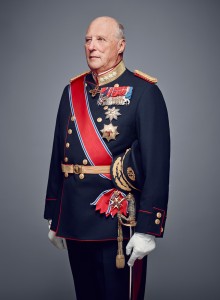
His Majesty The King. Photo: Jørgen Gomnæs / The Royal Court.
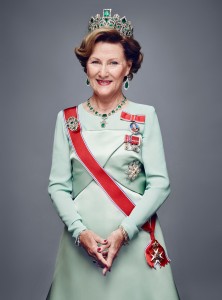
Her Majesty The Queen. Photo: Jørgen Gomnæs / The Royal Court.
The Crown Prince and Crown Princess
The Crown Prince undertakes various public ceremonial functions. He also acts as regent in the King’s absence. In addition to his official duties, Håkon has a strong interest in cultural matters. Håkon married Mette-Marit Tjessem Høiby, a commoner. Mette-Marit is Norway’s Crown Princess. She is interested in fashion and promotes reading in society.
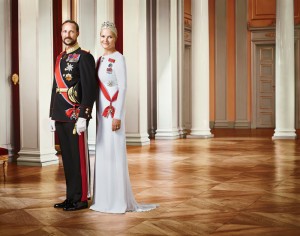
Their Royal Highnesses The Crown Prince and Crown Princess. Photo: Jørgen Gomnæs / The Royal Court.
The Princess Ingrid Alexandra
Princess Ingrid Alexandra was born 21 January 2004 and is the elder child of Crown Prince Håkon and second in line to succeed her grandfather. Despite her young age, the Princess has already carried out several official engagements. She also joins other members of the Royal Family on the balcony of the Palace to greet the annual children’s parade on 17 May, Norwegian Constitution Day and has attended the traditional ski jumping tournament at Holmenkollen in Oslo.
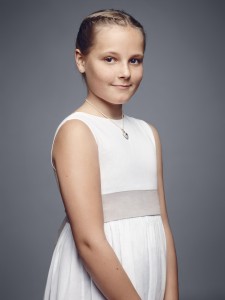
The future Queen, Her Royal Highness Princess Ingrid Alexandra. Photo: Jørgen Gomnæs / The Royal Court.
Visit the Royals: Guided tours of the Royal Palace and Oscarshall
The King and Queen live in the Royal Palace in central Oslo (pictured below). They have a summer house called Oscarshall, located on the peninsula of Bygdøy in Oslo, and holiday homes by the seaside and in the mountains. They also have a royal yacht called Norge and there are several statues of the Royal Family to be seen in Norway’s capital. The Royal Palace in Oslo and Oscarshall are open to the public during the summer. All visitors must follow a guided tour. The 2016 season started on 18 June and will last until the end of the summer. If you want to visit the homes of the Norwegian Royal Family, visit their website for more information.
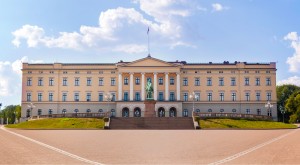
The Royal Palace in Oslo. The foundation stone was laid by King Carl Johan on 1 October 1825. The Palace was officially taken into use on 26 July 1849 by King Oscar I. Photo: Andreas Haldorsen
The Royal Guard by the Royal Palace:
If you wish to learn more about Oslo, book a professional guide at Oslo Guidebureau. Phone: +4722422818.

Text: Stefanie Tuma / Videos: Dina Johnsen
